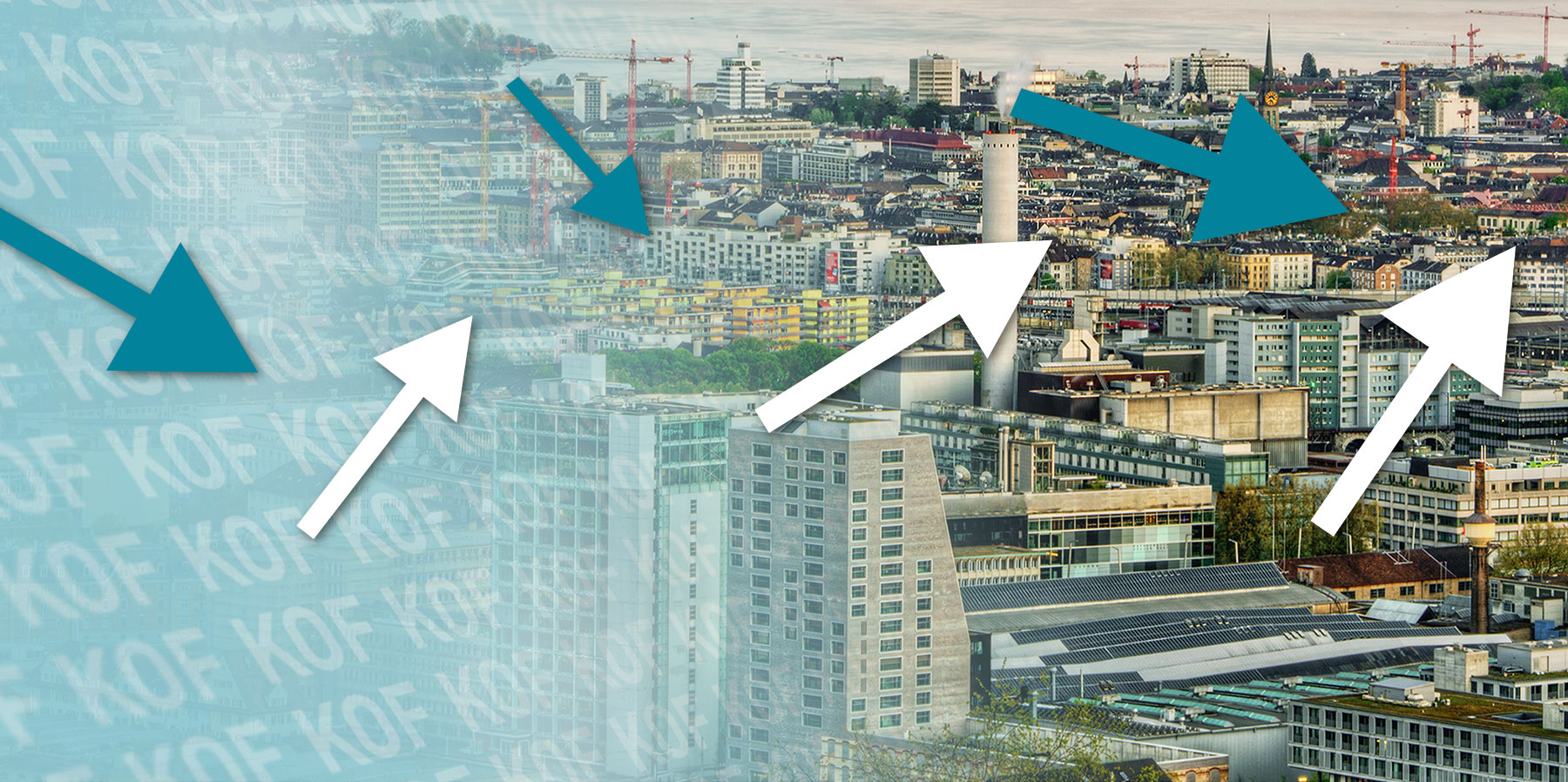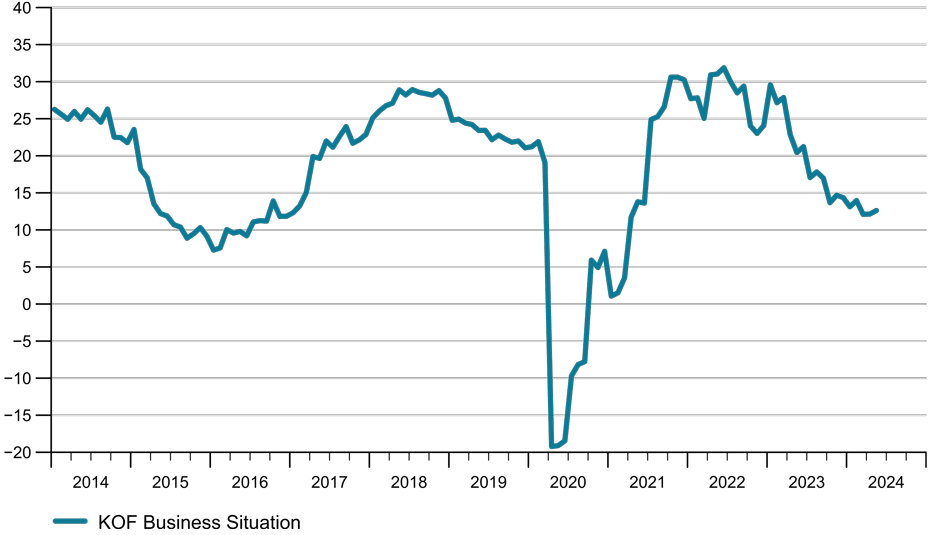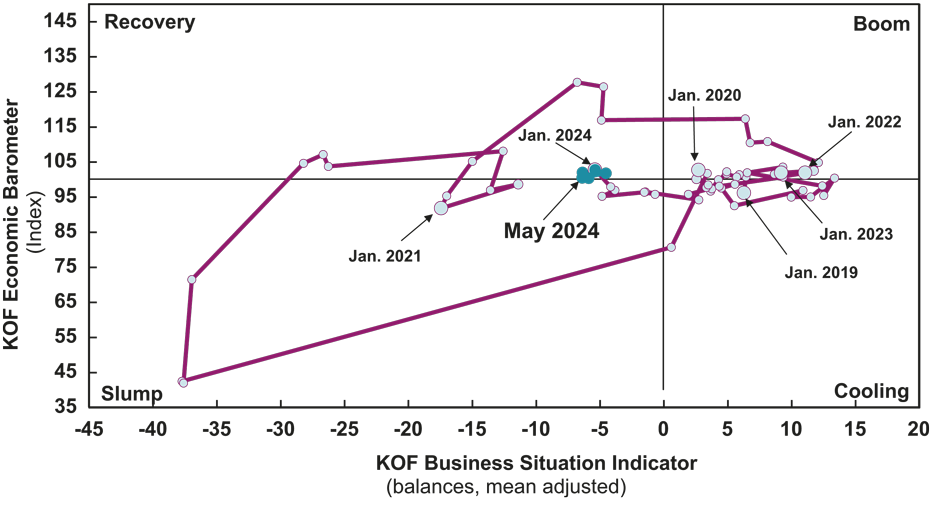
KOF Business Situation Indicator continues to rise
The KOF Business Situation Indicator for the Swiss private sector rose very slightly in May. It did not fall again in the previous month and remained stable (see chart G 4). In May, firms were more confident than before about business activity over the next six months. There are increasing signs that the Swiss economy may have bottomed out.
The business situation in the manufacturing sector improved slightly for the second month in a row. As incoming orders pick up and order books grow, firms intend to step up production further in the near future. The Business Situation Indicator rose more sharply in financial and insurance services and in the project engineering sector. Its level in the retail trade remains virtually unchanged, although sales of goods have picked up here. Retailers are therefore looking to buy more goods themselves as well. The gradual but steady slowdown in the construction industry is continuing (see table T 1).
Viewed from a regional perspective, the Business Situation Indicator is rising in the Zurich region, Northwestern Switzerland and Espace Mittelland in particular. It is also increasing in the Lake Geneva region and, somewhat hesitantly, in Eastern Switzerland. In contrast, the situation in Central Switzerland and Ticino is deteriorating (see chart G 5).
The KOF Business Situation Indicator illustrates companies’ current business situation. The KOF Economic Barometer, on the other hand, is an indicator of the economic outlook. The Business Cycle Clock shows that economic activity in 2023 was sluggish. There were tentative signs of improvement in the first few months of 2024. A widespread recovery has not materialised so far (see chart G 6).
Explanation:
Chart G 4 shows the KOF Business Situation Indicator across all sectors included in the survey. The business situation of sectors that are only surveyed quarterly is kept constant in the interim months.
Chart G 5 shows the business situation in the main regions defined by the Swiss Federal Statistical Office. The regions are coloured differently to reflect their business situation. The arrows within the regions indicate the change in the situation compared with the previous month. An upward-pointing arrow, for example, indicates that the situation has improved compared with the previous month.
The Business Situation Indicator in the KOF Business Cycle Clock (chart G 6) is plotted against the KOF Economic Barometer. The indicator reflects the current business situation, while the barometer is a leading indicator of changes in activity. The clock can be divided into quadrants. During the recovery phase the business situation is below average but growth prospects are above average. At the peak of the economic cycle the situation and prospects are both above average. During the slowdown phase the situation is above average and prospects are below average. At the bottom of the economic cycle the situation and outlook are both below average. Ideally the chart runs through the quadrants in a clockwise direction.
The KOF Business Situation Indicator is based on more than 4,500 reports from firms in Switzerland. Companies in the manufacturing, retail, construction, project engineering, and financial services and insurance industries are surveyed monthly. Businesses in the hospitality, wholesale and other services sectors are surveyed during the first month of each quarter. These firms are asked, among other things, to assess their current business situation. They can rate their situation as either ‘good’, ‘satisfactory’ or ‘poor’. The net balance of their current business situation is the difference between the percentages of ‘good’ and ‘poor’ responses.
You can find more information on the KOF Economic Surveys on our website: https://kof.ethz.ch/en/surveys.html
Contact
KOF Konjunkturforschungsstelle
Leonhardstrasse 21
8092
Zürich
Switzerland



